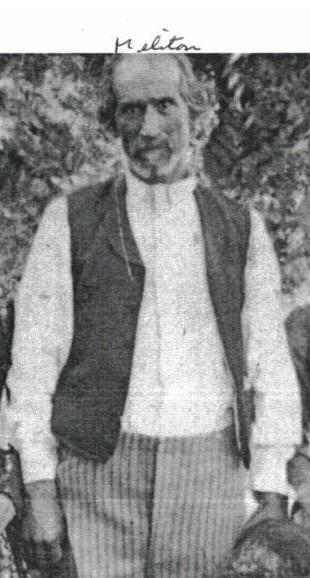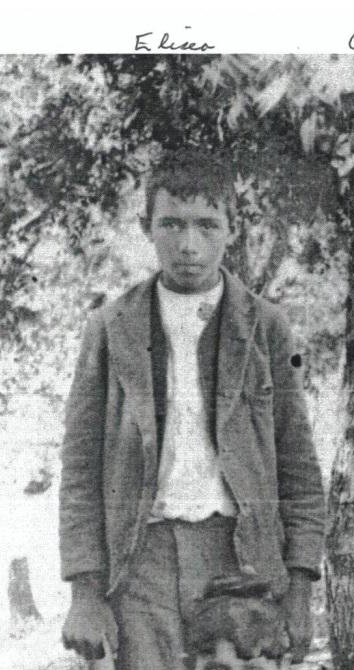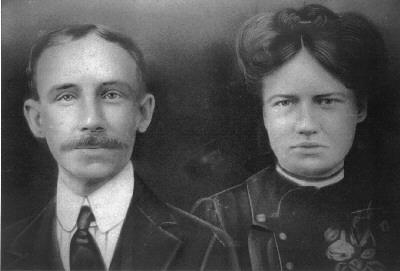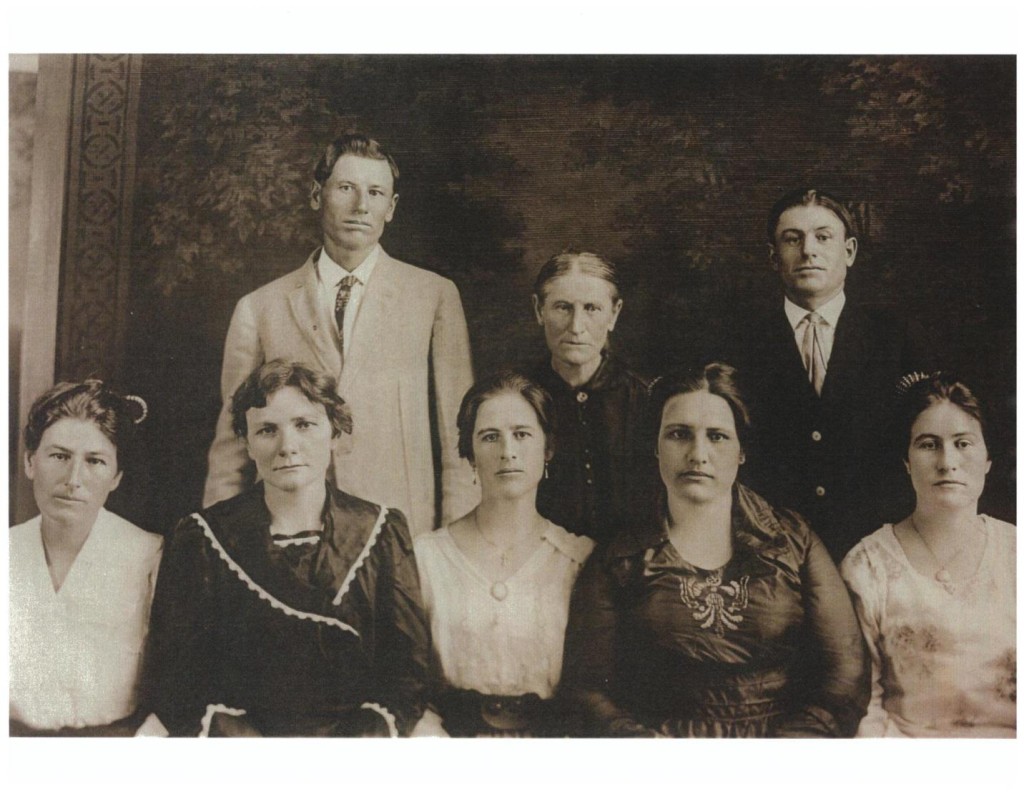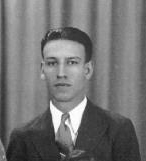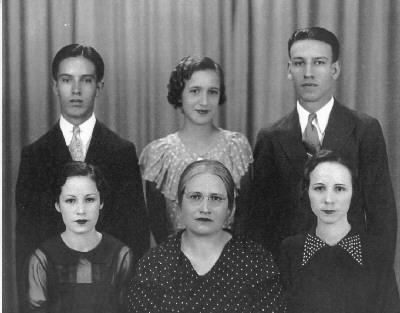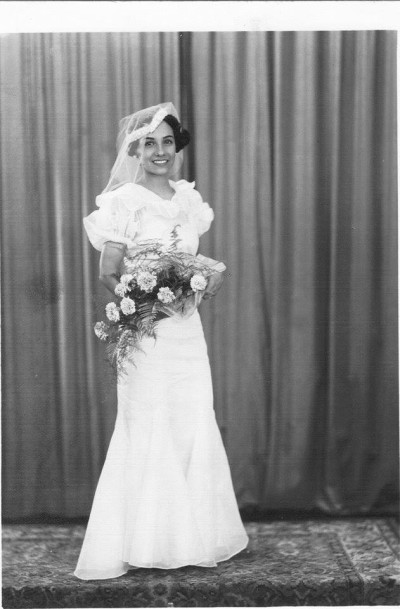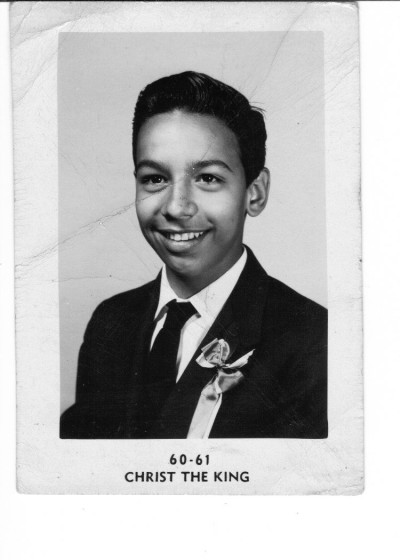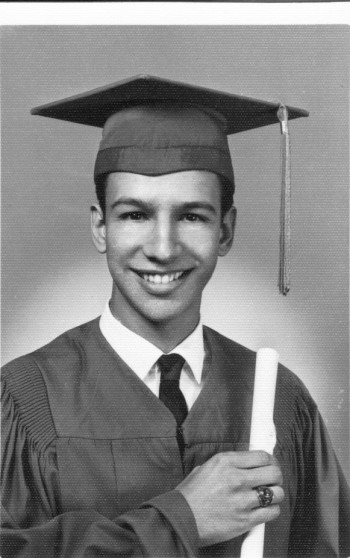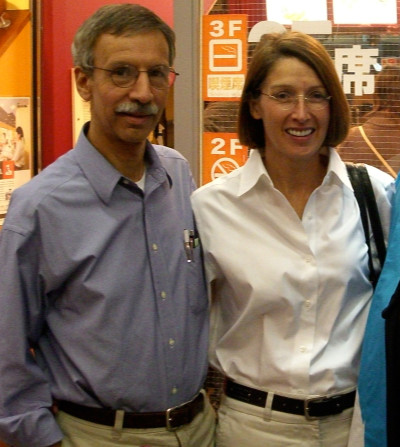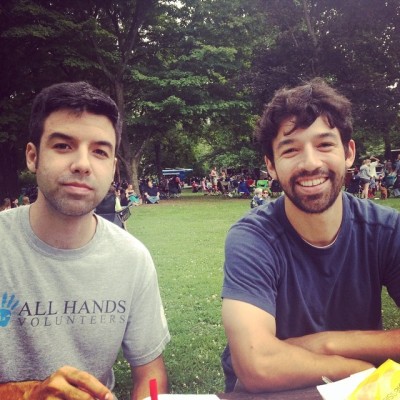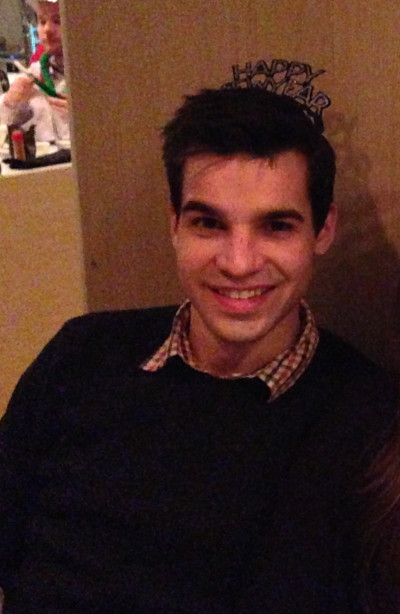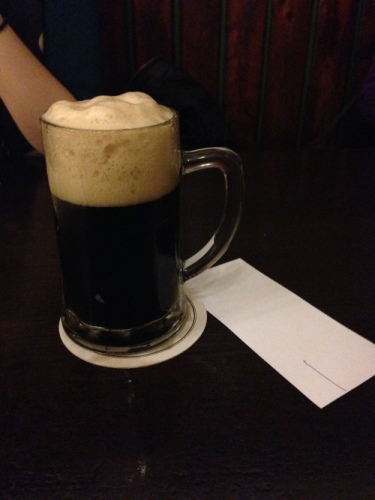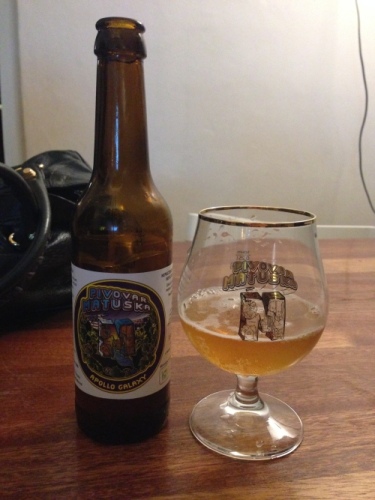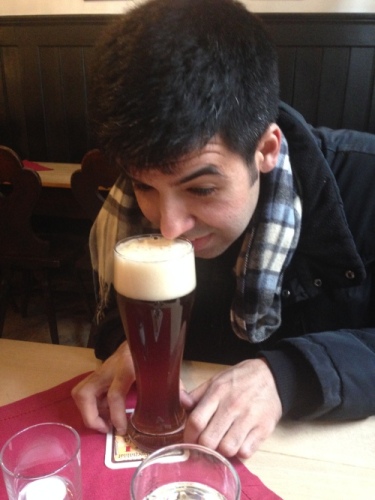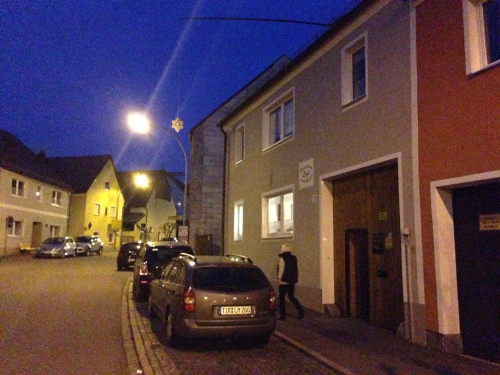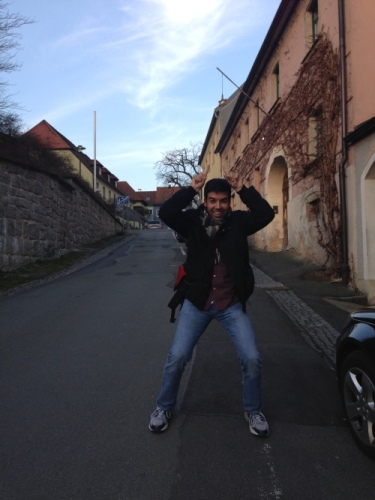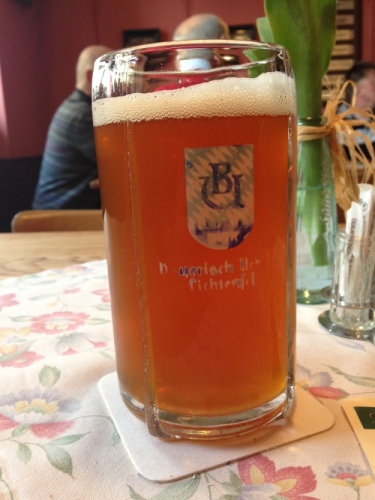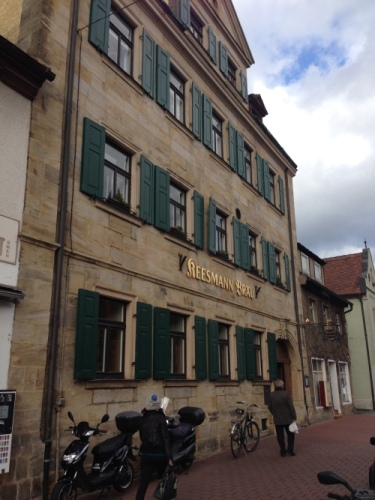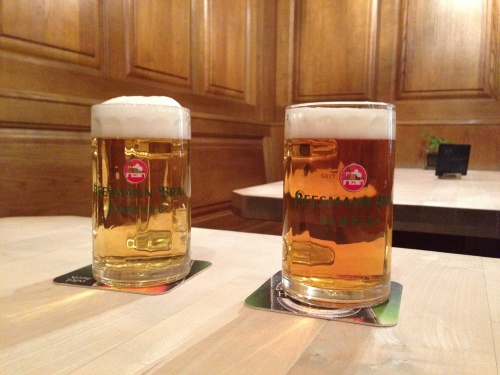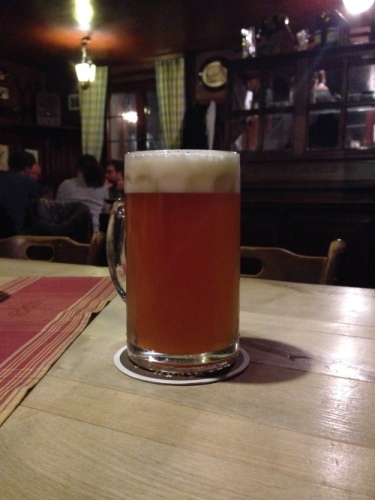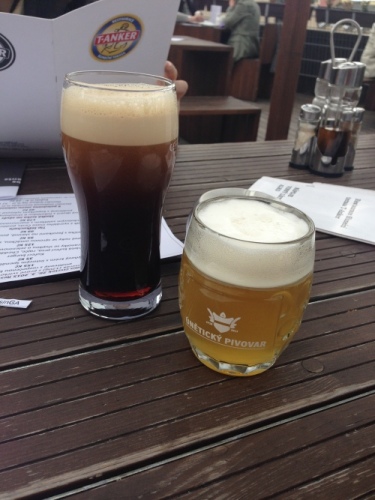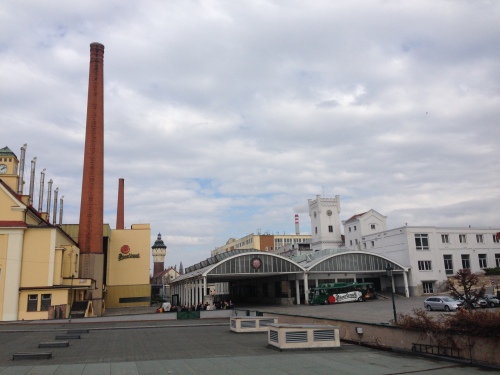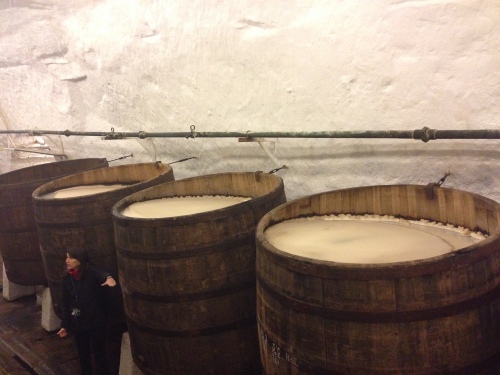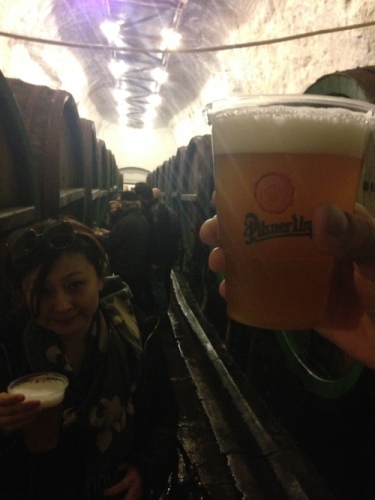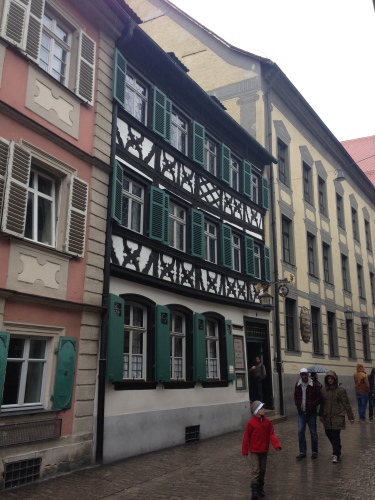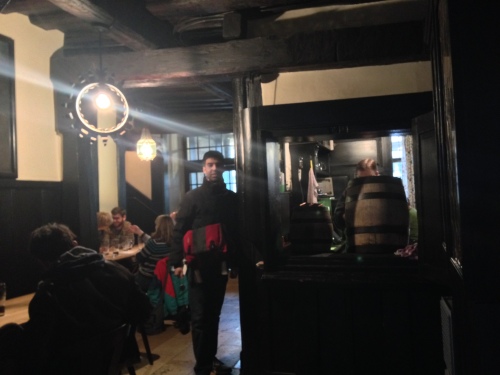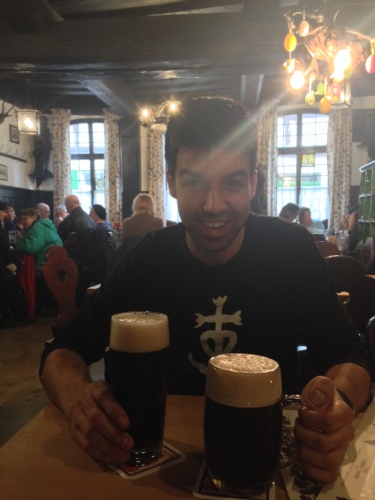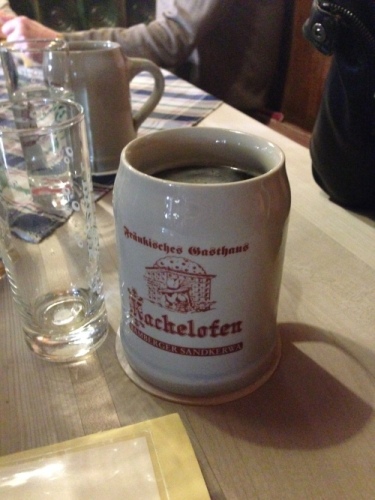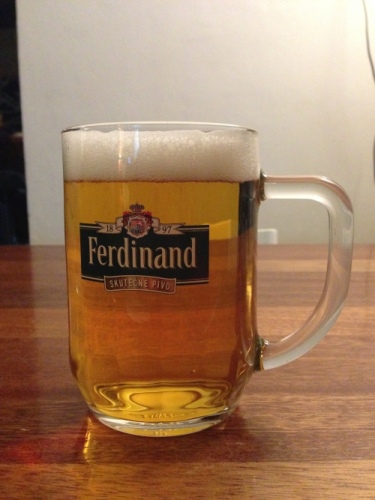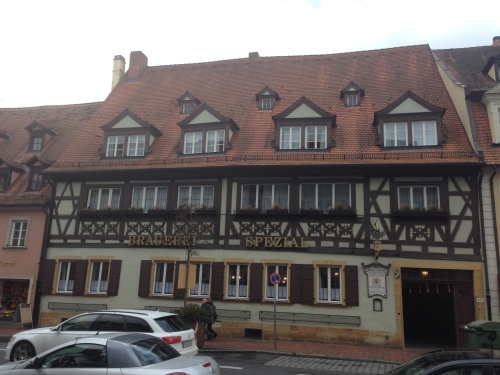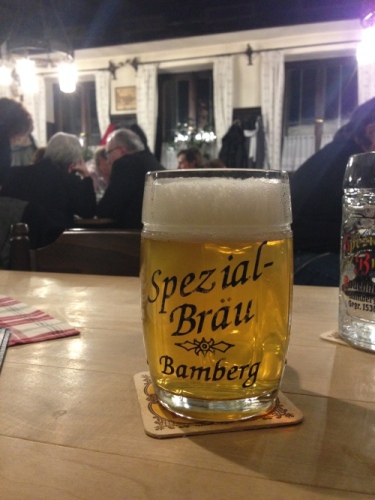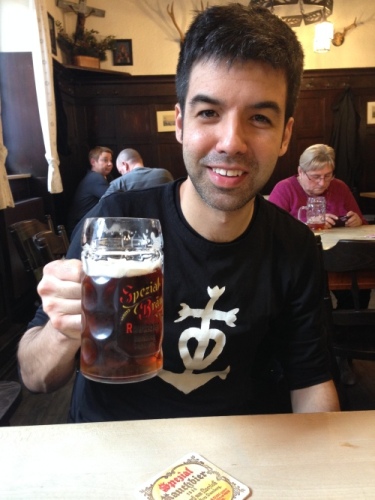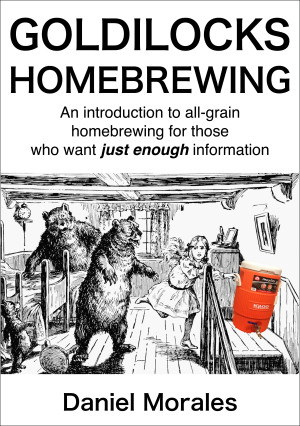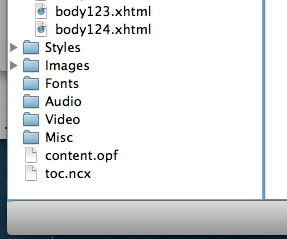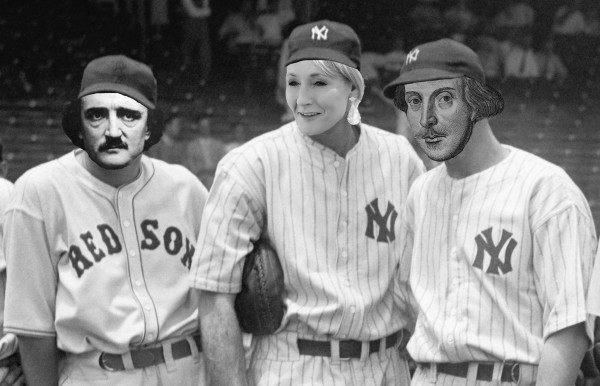I moved up to Chicago in late July, and it might be a shallow thing to say, but one of the events I was most disappointed to be missing in New Orleans (thus being forced to negotiate the Chicago equivalent) was Zwanze Day at Avenue Pub.
The past two years I Zwanze’d at Avenue and enjoyed the clear, orderly structure to the day. Was it crowded? A little. Did I do far too much daydrinking on a random Saturday and spend too much money? Probably. But the beers were great and so were the food and company.
Shortly after I moved, I made an effort to visit West Lakeview Liquors, the Chicago Zwanze Day venue, but I was unable to find any information about how the event worked or what I should expect. Maybe my Google skills have just eroded, but I don’t think anyone has written up a decent review of Chicago Zwanze yet. So I’ve decided to take it upon myself to fill in this gap in Internet knowledge for future transplants to the city or even new converts to craft beer who are in need of Zwanze Strategies.
TL;DR
Pros
- West Lakeview Liquors favors the early bird. If you go early enough and are willing to wait (as is the case at almost every Zwanze event), you will get the beer.
- Great crowd control. At no point did I feel overwhelmed by the size of the crowd.
- Endlessly patient bartenders and store staff.
- Extremely friendly beer geek community.
Cons
- Small pours. Zwanze pours were 2oz but seemed to vary slightly by bartender. I knew this information going in.
- Food distribution could have been improved. It probably makes sense, but there was more food at the store than at the bar.
- Iris went on too late, although I understand why they did it.
- Limited selection of Cantillon beers on tap (only three, where Avenue Pub had eight)
The Venue – West Lakeview Liquors
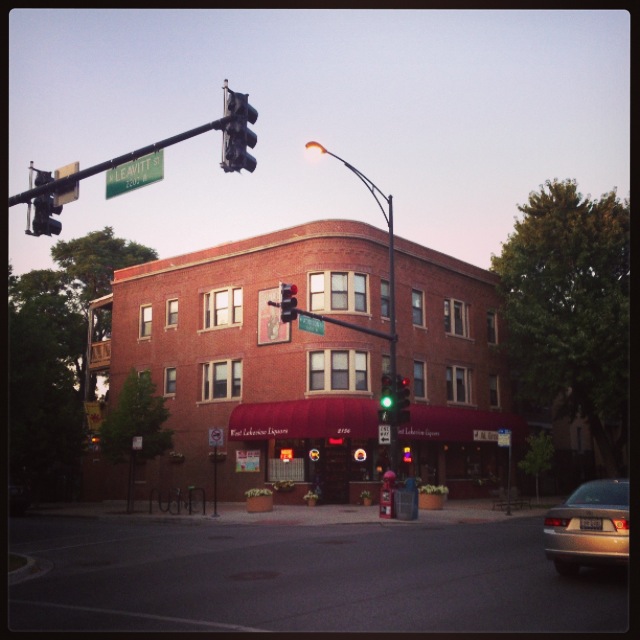
West Lakeview Liquors (WLL) is a small bottle shop on Addison just west of the Brown Line. The neighborhood is mostly residential, especially as you move away from the Brown Line, but then you come to the store and, across from it, Roscoe Village Pub (this will figure in the review later). WLL has an amazing stock of beer: several fridges full of craft sixers (local, regional, and national) and walls and walls of shelves covered in single bottles and bombers.
They also have an amazing selection of liquor, which I’ve found to be a little overpriced. That said, they do have good buys amongst the crowd such as $29.99 bottles of Buffalo Trace Barrel Select, which were hand-selected by owners of the store. The beer prices seem to be more standard.
Immediately next to the bottle shop section of the store, through a door, is the deli half of the store. During normal store hours, they have a fridge of deli offerings and also glassware and a few other items for sale. The deli also gives them increased space for events.
Events at WLL
I knew that I wanted to scout out a few events before I Zwanze’d, so I went to the Prairie Artisan Ales tasting in late August. This was a good choice. I arrived about ten minutes before the start of the event, and the store was full of likeminded folks. At six, they released rare bottles of Prairie beer, which were quickly snatched up for purchase (although bottles didn’t sell out immediately).
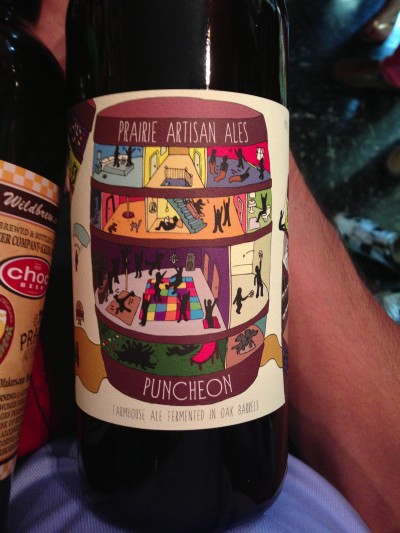
Then everyone filed through into the deli where there were four beers on tap and five or six being poured from bottles – these were all free. I couldn’t believe it.
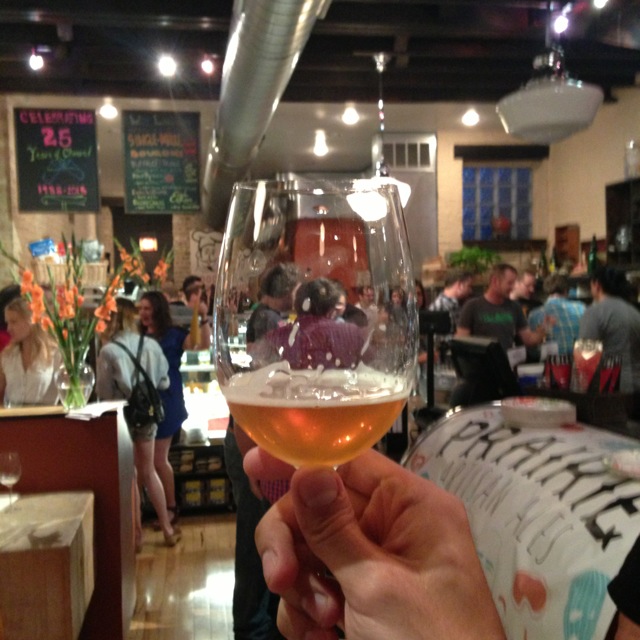
After I’d tried all the flavors, I was about to leave and was browsing the bottle selection one last time when a pair of pizza delivery men came in. They set these out on tables in the deli. The pizza, too, was free. Unbelievable. I’ve never seen anything like it. Altogether there must have been 40-80 people or so? I’m bad at estimating crowd size. At no point was it overcrowded, and everyone was friendly in line. The pizza did get eaten completely, but the free beer lasted longer than I was there.
Suffice it to say my curiosity was piqued for Zwanze, but I was worried because the store had put out almost no information about the event and all my questions about Zwanze had been answered with stonefaced disinterest bordering on annoyance. Sorry, guys! I just wanted to know what the deal was!
Zwanze Day – Preparation
A week before Zwanze, WLL updated their website with this info:
CANTILLON ZWANZE DAY 2013
September 14, 2013 – 12pm – 8pm
2PM TAPPING of 1 BEER in 14 COUNTRIES at 46 LOCATIONS
Zwanze day is a special day in which Brasserie Cantillon in Brussels, Belgium releases a rare beer at only forty-six locations around the world. West Lakeview Liquors is extremely pleased and honored to have been selected as one of the locations again this year! For Zwanze 2013, Cantillon was inspired by the Abbey brewing tradition in Belgium. You can read a full description of the inspiration and process behind the beer here.
The event starts at 12pm! Zwanze 2013 tapping is at 2pm. Commemorative Zwanze Day Glasses for sampling will be available at 10am on Sept 14. We have a great day planned with rare beers, special bottle releases throughout the day, lot’s of delicious food & so much more.
Imported
Zwanze 2013 • Brasserie Cantillon, Belgium
Gueuze • Brasserie Cantillon, Belgium
Iris Grand Cru • Brasserie Cantillon, Belgium
Cochonne “Speciale” 2012 • Cochonne, Belgium
XXX Bitter • De Ranke, Belgium
Wild West • Alvinne/Stillwater, Belgium
Black Damnation 1 – Blackberry Albert • De Stuise, Belgium
Aphrodite • Dieu du Ciel!, Canada
Peche Mortel • Dieu du Ciel!, Canada
Pénombre • Dieu du Ciel!, Canada
Hr. Frederiksens Væsel Brunch • Amager/Mikkeller, Denmark
Salty Kiss Gose • Kissmeyer/Magic Rock, England
Wild Boar IPA • Buxton, England
Vereinigte Historische Bierfanatiker Grätzer • The Monarchy, Germany
Sauer Power • Freigeist/Jester King, Germany
Son Of A Batch • The Monarchy, Germany
Grooving Hop • Toccalmatto, Italy
Zona Cesarini • Toccalmatto, Italy
Madamin • Loverbeer, Italy
Sweet & Sour • Trois Dames/Bad Attitude, Switzerland
Sainte Ni Touche • Trois Dames, Switzerland
Saison Framboise • Trois Dames, Switzerland
Domestic
Tart Lychee • New Belgium, Colorado
Espresso Yeti -Oak Aged • Great Divide, Colorado
Bourbon County Stout 2012 • Goose Island, Chicago
Blueberries Feel Pain • Offcolor/Penrose, Chicago
Hubris – Brewery Vivant, Michigan
Sidra de Nava • Virtue, Michigan
Pecheron – Virtue, Michigan
Saison du Fermier • Sideproject Brewing, Missouri
Barrel Fermented Belgian Style Quad • Perennial, Missouri
El Cedro • Jester King Brewery, Texas
Australian Summer Ninja • Pipeworks, Chicago
Poivre Cucumber Saison • Pipworks, Chicago
Etc…
Cantillon Zwanze 2013 T-Shirt • Yellow-Orange print on Dark Grey • American Apparel • Men’s & Women’s Sizes – 20$
Cantillon Wood Crates 45$
Limited Edition Zwanze Day 2013 Tulip Glass (for sampling) – 40$
Limited Edition Zwanze Day 2013 Tulip Glass for sampling with 2oz each of Zwanze 2013 & Iris Grand Cru) – 50$
We hope that you will join us for Zwanze Day 2013.
Santé
I’ve bolded the most important information. From this I could gather that the true start time was 10am (when they start selling glasses) and that I’d probably have to line up before that. I resigned myself to another day of waiting and drinking (woe is me; woe, I say) and decided to try and arrive by nine.
The Line
On the day of, I got there about 8:50 and my stomach sank when I saw the line:
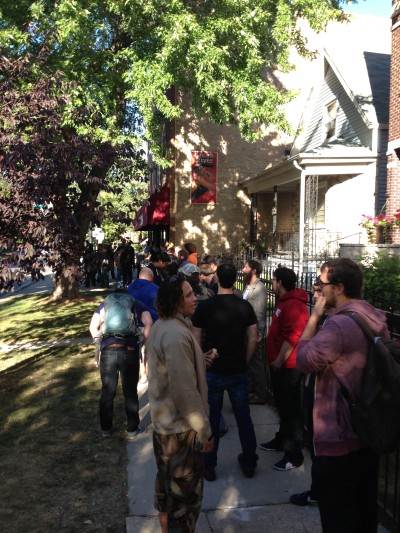
Luckily I made friends in line who guaranteed there would be enough glasses to our spot in line. They’d been at the same spot the year before and had no trouble. Over the next two hours, more and more people got in line. There was a delay of an hour or so, during which workers hustled back and forth from Roscoe Village Pub with kegs on dollies. By the time they let us in, the line behind me looked like this:
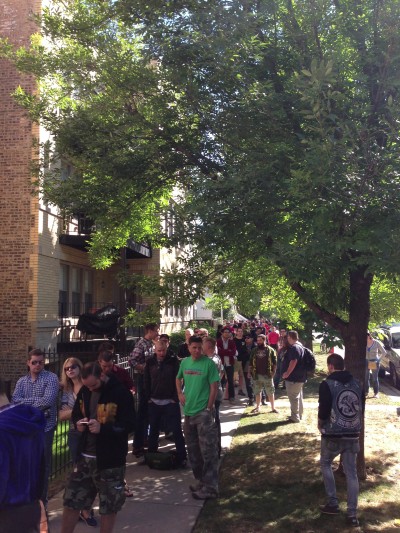
Everyone filed into the deli side of the store. It took ten minutes or so to get in the door and another five minutes to get to the register where they sold Zwanze Day glasses.
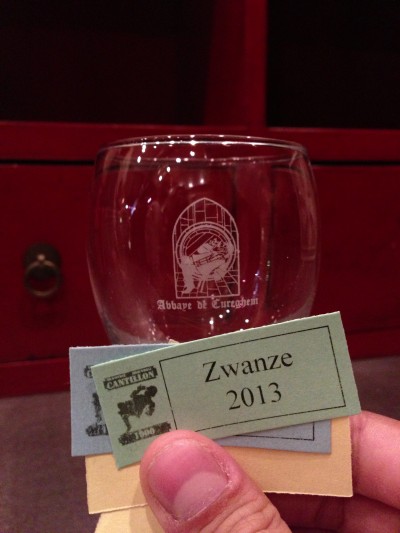
The glass alone was $40 and for $50 it included two tasting tickets – one for the Zwanze which was to be tapped at 2pm across the street and Iris which was to be tapped at 4pm. They also gave us two tickets good for “rare beer purchases.” Throughout the day, they brought out boxes of rare beers. Apparently, these bottles were monopolized by folks standing near the counter last year, so this year WLL limited purchases to two bottles per person.
$50 sounds like a lot, you might say. And you would be right…until you learn what it gets you.
Zwanze Day – WLL
The beer was flowing immediately. There were, I think, eight taps in the deli, all of which were free with the purchase of a glass. This included some really nice stuff. Favorites include Grooving Hop by Birra Toccalmatto, New Belgium’s Tart Lychee, and Pipeworks Poivre Cucumber Saison.
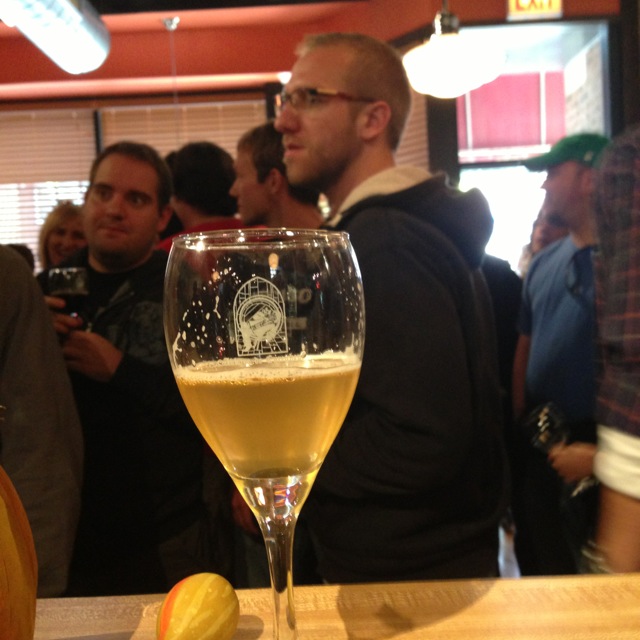
2-3 workers manned the taps and there was only ever a short wait for access to brew. 2-3 additional workers were on the register in the deli, and another 2-3 folks were on the cash register in the bottle shop. This was an all-hands-on-deck type event.
All this beer for free for $50 wouldn’t be a bad value, especially for 11am in the morning, but a huge number of people brought their own beer, and a bottle share erupted around a table in the back of the deli. They were very willing to share, even with me who’d brought nothing. It was a little crowded, so I wandered around the store checking out the selection and making friends.
At 11:45, I headed across the street to stand in line again.
Zwanze Day – Roscoe Village Pub
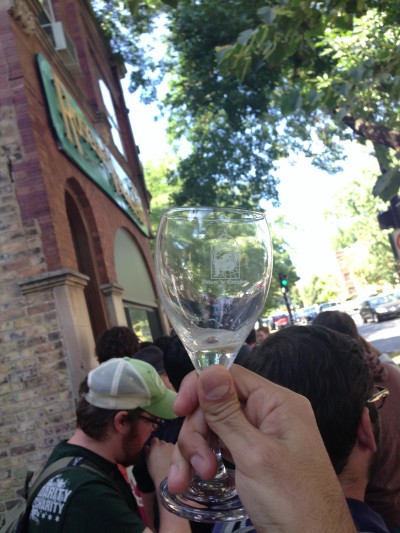
When I wandered across the street, there were still people standing in line to buy glasses at WLL. Altogether, I think there were probably 300-400 people there for the event. I knew that the pub would not be able to hold everyone, so I decided to get into the bar with the first wave and to sit and enjoy myself for a few hours until the Zwanze tapping. This meant more standing in line, but I was closer to the front in this line than I was in the first line.
After a few minutes, the bottle sharers came across the street in a big crowd, and at noon we poured in Roscoe Village Pub (RVP) for more pours. RVP is your prototypical bar. There’s a long counter bar with stool seating and then 4-5 tables along the wall opposite which fit four people each. There was a yard out back which seemed blindingly bright every time I stepped outside.
4-5 bartenders manned the bar, and again, despite the numbers, it was never a bad wait for a beer. Everyone continued to be social and friendly, sharing more beer left and right. Not once did I see a staff member be short with a customer or make an ugly face or even look frustrated or tired – it was amazing.
There were ten taps on at the main bar at Roscoe, the best of which was Side Project Saison du Fermier, in my opinion. I managed to get two pours of it before the keg kicked. A lot of the other “great” beers were a little out of my ABV range but included sought after stuff like Black Damnation I – Blackberry Albert and one of the Great Divide Yeti varietals. I did also enjoy the Alvinne/Stillwater Wild West sour golden ale which was light, sour, and almost infinitely quaffable.
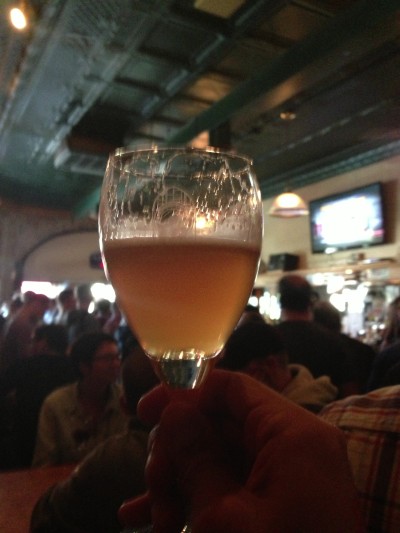
At random intervals, folks came through the bar with big trays of food. I saw pretzels at one point, but that might have been it. They went pretty quickly. Luckily I had the foresight to pack a sandwich and some light snacks. I wish I’d brought more, and I easily could have been the coolest guy there if I’d brought more to share with folks at my table.
Zwanze – The Tapping
At 2pm, the Zwanze was tapped, and the people rejoiced…but you hardly would have noticed it. The bar was crowded, but not overly so. The bartenders filled several pitchers full of Zwanze to facilitate a greater number of distribution points, and after a few minutes, everything was back to normal. Because Zwanze required a ticket for a pour, the keg remained unkicked until later in the day.
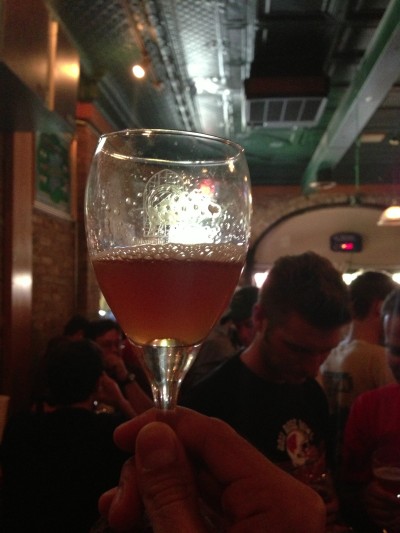
Note: Throughout the whole time I was in RVP, there was a line outside to get in, and a bouncer kept track of those entering and leaving, I assume to prevent them from breaking fire code. I heard that some had to wait another two hours to get in, so I imagine that those with Zwanze tickets slowly made their way into the bar and had access to the beer. It’s feasible to imagine that some arrived later in the day at around 1 or 2pm, bought their glasses, stood in line outside RVP, and had Zwanze at 3 or 4pm. This is thanks to the strict 2oz pours and single tasting ticket per person.
I get why they do this, but I did miss the 6oz pours from Avenue Pub. (I mean, goddamn, check out the pours at Avenue Pub in 2011!) That’s a full-fledged pour that really lets you get a sense of the beer, whereas at West Lakeview Liquors you really just get a tasting, a sample, a tease. But I can understand and respect the way they run things. It’s definitely a more fair way to run things and allows them to accommodate a larger crowd.
This year’s Zwanze, however, didn’t require a full pour to get a sense of it. As was well publicized before the event, the base beer was an Abbey Dubbel (one that was supposed to be released last year but didn’t turn out right), so to me it tasted like a dried out, superfunky version of a Dubbel – the trademark maltiness disappeared and left was some funk and hoppiness. Not a bad beer, but not as overwhelmingly impressive as past Zwanzes, notably the 2011 and 2012.
Here are my Zwanze Power Rankings:
4. 2010 – The original bottled “wit” that started the Zwanze madness. This might be style discrimination (I hate wits), but I just wasn’t into this brew.
3. 2013 – This year, the spontaneously fermented “abbey” beer.
2. 2011 – A lovely grape-based lambic not dissimilar from the spectacular St. Lamvinus.
1. 2012 – A brilliant rhubard lambic. To be honest, I’m not sure if I prefer this over the 2011, they were both so great.
Zwanze – The End
At around 3:00, I passed my Iris tasting ticket to a friend and then got out of there. I had a little writing to do and a big buzz to sleep off first, so I was unfortunately not able to make a whole day out of it and catch the Iris Grand Cru tapping. I like that they left some Cantillon to tap later in the day, which would definitely benefit those who aren’t interested in starting early or standing in line too long. Very well planned.
I did make sure to stop back by WLL, and I’m glad I did. They had trays of food and cookies out, and I was able to supplement the meager lunch I brought with me.
I also got to check out the rare bottle scene. At random intervals the staff brought out a big cardboard box of beer and those near the counter had the chance to purchase from it. This included things like Cantillon Gueuze, Cantillon St. Lamvinus, Dogfish Head Bitches Brew, the Eclipse Stout series, Drei Fonteinen Oude Gueuze, Tilquin Gueuze, Three Floyds Behemoth, etc. Lots to choose from. I didn’t buy anything, but I probably would’ve had I had access to a Cantillon bottle.
And of course, the taps in the deli were still going strong. I made sure to have a second hit of the Grooving Hop, a lovely session beer. All in all, it was a great day of drinking.
My Advice
Here’s the section where I give my tips:
- Either go early around 8 or 9am or show up late at 2pm. Anywhere in between is kind of a no-man’s land. Not sure what I’ll do next year given the choice, but since I’m a ball of stress normally, I’ll probably be an early bird.
- Bring food. Sandwiches, nuts, chips, fruit, cookies. Not a huge amount, but definitely enough for yourself. And I guarantee you will win friends if you bring enough to share.
- Just relax and go with the flow. Don’t stress: you’ll probably get your Zwanze. I was seriously impressed by the friendliness of the crowd and the patience of the staff. I didn’t see a single ugly encounter.
- Don’t bring bottles. There’s SO. MUCH. BEER. already. I’m not sure why more is necessary. You’ll just spend the whole day carrying heavy bottles and getting even more drunk than you need to be. Save them and have friends over for your own tasting. Enjoy the fresh keg beer that’s included in the Zwanze sticker price!
Whew. I hope that was helpful for someone. Huge thanks to the West Lakeview Liquors crew for running a great event.
